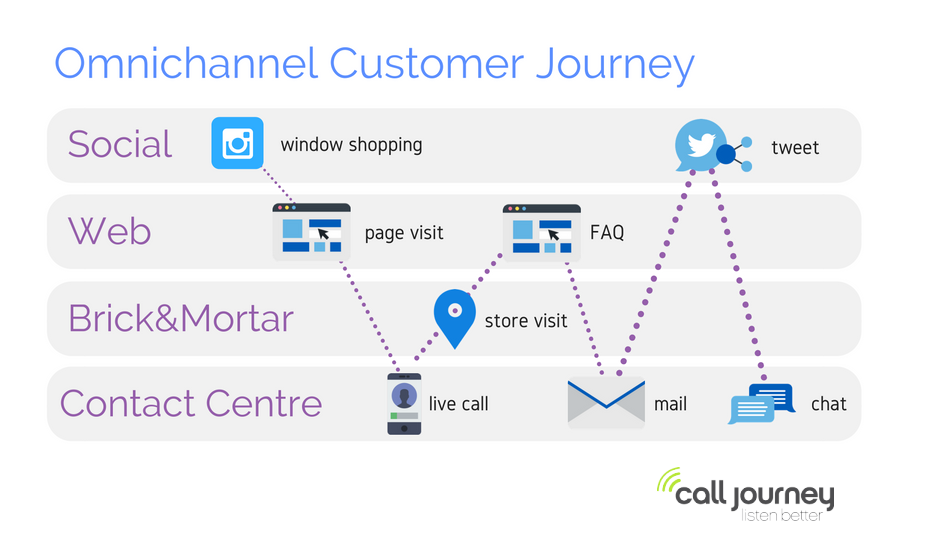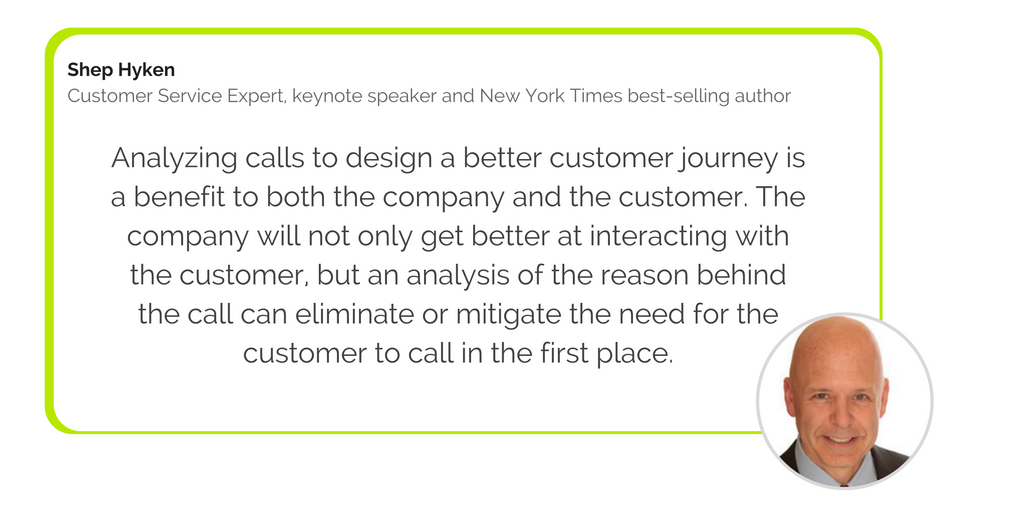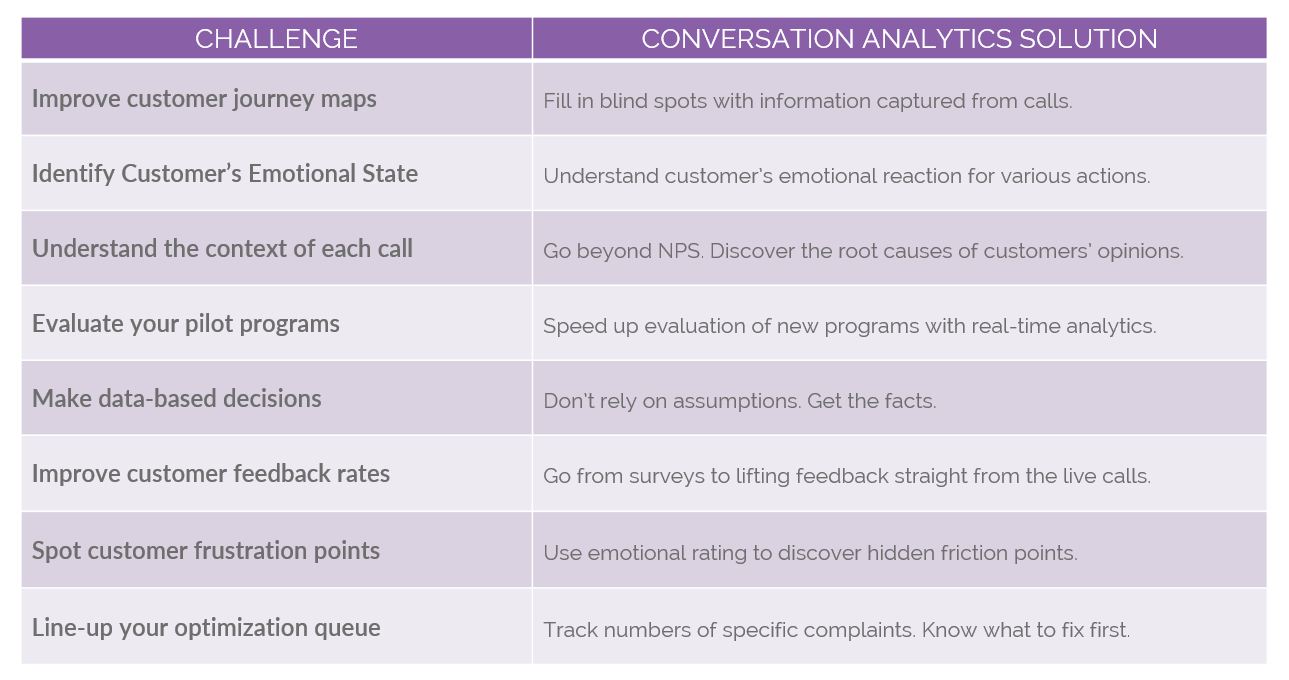Debunking 5 myths about adding voice to Omnichannel Analytics.
Omnichannel Analytics is all about customer journeys. It’s task is to connect the dots between touch points, devices, and actions to paint an accurate picture of every individual customer’s experience; to design predictable models of the client base.
To achieve full visibility of the customer’s journey, businesses need to venture out of their safe data zone that spans email, social and transactional data. Any enterprise claiming to be ‘omnichannel’ must track, collect and analyse information from all the channels and that includes phone conversations.

In the recent years, the adoption of voice-related technology has been steadily growing by approximately 20% per year. In 2016, every fourth business uses some iteration of speech analytics. Despite impressive progress, most companies still settle for examining less than 2% of their calls.
During an average 5-minute phone call, the customer and agent exchanges about 5,000 words.
Callers share their stories, give context, grade their experience across various touch points. And of course, there’s another perk: human voice is an indicator of emotions.
Yet for some reasons, businesses are slow to adopt voice-based solutions. According to DMG report, there’s no lack of appeal — 45% of executives questioned in 2015 proclaimed their interest in deploying some iteration of voice analytics. Only half of them got around to the task.
So, what myths are there about voice onboarding that are stopping businesses?
1. Speech analytics is not accurate
Even a few years ago, accuracy posed a significant barrier for successful deployments of voice-based analytics. Most transcripts contained too many inaccuracies to serve as a reliable source of analysis.
In the last five years, the technology underlying voice analytics took a giant leap forward. Leading providers introduced AI-powered Natural Language Processing which revolutionized the way in which machines digested chatter.
Currently, businesses can expect above 85% transcript accuracy from voice recognition providers.
To further improve the analytical output, many solutions offer “confidence” rating which indicates how sure the machine is that the word it noted was the actual word spoken. It allows analysts to remove low confidence utterances from the data set.
2. The quality of phone call recordings is not good enough for analytics
One of the recurring problems of businesses willing to start taking advantage of their recordings is the quality barrier. Some of the typical problems include multiple speakers on one channel, background noise, storing format, codec.
This quality gap still prevents many companies from successful voice technology trials.
Encountering a barrier of this magnitude so early in the process causes a lot of ‘getting off on the wrong foot’ situations.
To rectify this situation, vendors develop recording capability or work with partners providing over-the-top conversation-capturing platforms. These solutions don’t disrupt the existing systems, yet allow businesses to obtain high-quality recordings with minimum pain.
3. Analysing voice is too complicated
When it comes to unstructured data, voice analytics has always been seen as the ‘difficult’ one. Technological challenges, training of the staff, not to mention the learning curve. In the end, sometimes the pain of not knowing what’s happening on the calls was less than the pain of onboarding voice analytics.

Let’s face it, customer journeys are not strictly about the calls.
The end goal is having access to ALL the information available about your customers, regardless of its source and format.
Ideally, you will also want to find it in one place, rather than switch between different software providers, dashboards, tools and risk missing valuable clues about customer experience.
Voice vendors are starting to appreciate this fact and instead of offering stand-alone services, they connect straight to your favourite data hub, be it Salesforce, Zendesk or Power BI. And it’s all possible thanks to APIs. Application Programing Interfaces work much like tunnels between programs. They let your company ad voice capability to your data platform, without the usual hustle of onboarding a new solution.
4. Outsourcing voice analytics is risky
Contact centres are known for having a substantial data footprint. Hundreds or thousands of conversations often containing sensitive customer data are recorded and stored on company servers. For a long time, any interference into that data was considered a risk. Businesses were hesitant to let third-party providers anywhere near their recordings. Sending data to another server was seen as the ultimate evil.
In 2016, the majority of call center executives are beginning to realise that voice analytics is their partner in combating fraud and data theft.
Most vendors provide a service of cleaning recordings of personal information, thus limiting the possibility of a damaging data breach. Ability to review large chunks of call center interactions without additional human input improves call quality assurance process and allows QA experts to focus on calls that may raise red flags. (read more: 20 Tips for doing Call Center Quality Assurance like a Boss)
5. There is too much data in call recordings
When talking about analysing phone calls, I often come across the view that call centres provide too much information to process. Some executives imagine voice analytics to be a Pandora’s Box that once opened will overwhelm the analytics department with data.
You don’t need to use all the data you have. You just need to use it for ALL THE DECISIONS you make.
There are multiple ways in which data garnered by phone call analysis can be applied. My previous blog describes how phone calls can be used to improve overall customer experience..
Here are some specific examples:

When it comes to designing experiences, information is the key. Treated separately, phone calls pose an excellent opportunity to personalize the customer experience. Analysed in thousands, they reveal patterns useful in the construction of optimized customer journeys.



